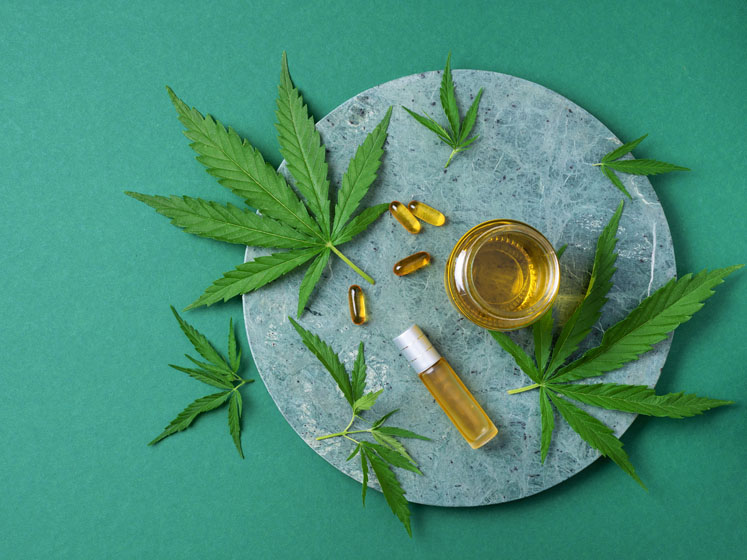Even with a slight Q1 2022 slowdown, the industry and market appear to be growing at a rapid pace ... and e-commerce remains the top sales channel. Brightfield attributes any slight change to supply chain issues and slowing consolidation.
As Brendan Smith, founder and Chief Executive Officer of The Raw Botanics Co., stated: “it became very clear during 2022 that CBD as an industry has moved away from the gold rush period.”
According to Madison Cavanagh-Mailloux, Senior Associate at Arizona-based Columbia West Capital, M&A data sourced from Capital IQ showed the CBD market revenue growth slowed in 2021, primarily owing to price compression and the shift to lower price point products.
The landscape remained competitive, continuing to drive consolidation. The US and Canadian CBD market M&A unit volume grew 42.9% in 2021 compared with 2020, whereas the amount of total transaction value decreased by 40.1%.
And, to date, 2022 M&A activity decreased dramatically, with only 10 announced transactions, reflecting a decrease in the deal count of 66.7% and a decrease in total transaction value of 10.1% year-on-year.
Sheldon Baker, Chief Executive Officer of California-based brand marketing firm, Baker Dillon Group, notes that the lack of CBD education is still a negative aspect. Many consumers still ask the question: “can I get high from CBD?”
Others are confused by the high product price points. And many think that purchasing CBD at a gas station is a real bargain. Education at the consumer level by ingredient manufacturers and retail product formulators would go a long way in helping to sell more products.

At the same time, according to Smith, consumer education has led the way to a demand for more quality and transparency from brands. “There is a significant interest in higher quality, custom formulated and unique products, something that has been missing from the industry."
“As the consumer has become savvier, brands have been forced to step up and produce better products. This trend should continue and the big opportunity in the CBD space is for companies willing to invest in unique products."
"Those that continue to white label or create non-differentiated products will suffer. Some of the more interesting trends are the use of minor cannabinoids (CBG, CBC, CBN) and custom terpenes blends, combining plant and mushroom adaptogens with CBD.”
Functional mushrooms became a big trend in 2022, leading to an increase in interest in combining hemp and mushrooms. Smith says they are starting to see more brands follow what Raw Botanics started by creating hemp and mushroom blends that have great health benefits in terms of reducing stress and improving sleep.
The recently announced partnership between Charlotte’s Web and Major League Baseball should also help to further legitimise the use of CBD and educate people about CBD’s health benefits.
The role of science
This year, CBD clinical studies were beginning to establish a link between CBD consumption and pain management, such as sleep, mood, anxiety, women’s health, personal care and other health concerns.
Several products have been designed to address women’s health issues, specifically discomfort from PMS to cramps and migraines. All positives.
Radicle Science and Open Book Extracts conducted the first-ever clinical trial study comparing cannabinoids with melatonin, with most participants receiving a cannabinoid product experiencing significant improvement in sleep quality and duration as well as less of one of melatonin’s most common and cumbersome side effects – grogginess.
Open Book Extracts also completed its first cosmetic research study, an open-label, randomised, passive-control study examining the impact of topical serums containing tetrahydrocannabivarin (THCV) on skin acne.
Still, on a negative note, “big tech — namely Google and Facebook — continue to ban CBD brands from advertising,” Smith said.
“This is forcing brands to get creative and look elsewhere to spend their ad budgets. Influencer marketing, affiliates, direct mail and even print media are where those budgets are going for CBD brands.”
“Unfortunately,” says Cavanagh-Mailloux, “the US FDA has not compiled enough information on CBD and it remains strict on health benefit claims. As a result, regulatory headwinds combined with aggressive price compression have led to huge losses."
"In fact, 60.0% of acquirers in 2021 and 90.0% of acquirers in 2022 were publicly traded, with a stock price below five dollars per share and much of those trading on the OTC exchange.”
Other Brightfield data shows the industry landscape remains competitive, with the top 20 companies capturing 67% of the total market share in 2021. New entrants continue to enter the market, driving companies to differentiate themselves and prepare for growth as state regulations continue to evolve.
Regulatory affairs
The continued delay in regulation has resulted in relatively modest channel expansion, specifically retail. Concentrated growth was seen in emerging channels such as convenience and grocery.
A focus on differentiating one from competitors has also resulted in new CBD product formats. Gummies were one of the biggest and up-and-coming formats in 2021, and many companies entering this growing space are differentiating products through an array of functional ingredients, including mushrooms, Ashwagandha, L-theanine, and vitamin B12 and green coffee beans for energy.
Michael Scherr, founder and Chief Executive Officer of Arbor Hemp, noted: President Biden signed the marijuana research bill into law this year.
"As an owner of a hemp company backed by clinical data, this gives me hope that CBD and other hemp-derived cannabinoids such as CBG or THCv will get the attention they deserve. This is providing opportunities to increase the legitimacy of the industry.”




